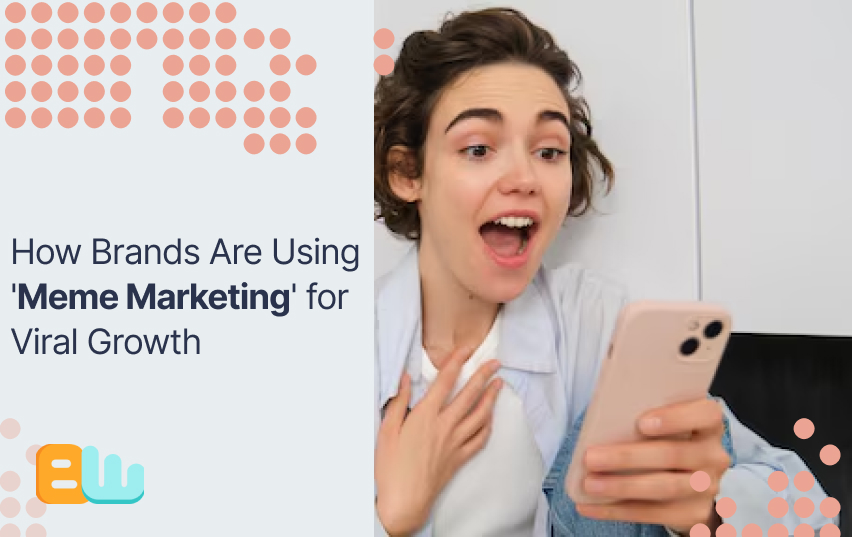
Speaking the language of internet culture can help businesses stand out in a world where social media feeds are overflowing with content, something that traditional advertising has never been able to do. Using culturally relevant, highly shareable content that usually combines relatability and comedy, meme marketing has developed from an experimental technique to a key tactic for organizations looking to create genuine connections with online users.
However, what distinguishes the companies that are able to take advantage of viral memes from others that are publicly criticized for making an excessive effort? The solution is in knowing not only what makes content shareable but also how to match that shareability to your marketing goals and brand values.
Let’s study how the most creative businesses of today are using meme marketing to generate impossible interaction and how you can apply similar tactics into your own social media strategy—all while avoiding the typical mistakes that have harmed the reputations of other organizations.
The Rise of Meme Marketing in Digital Strategy
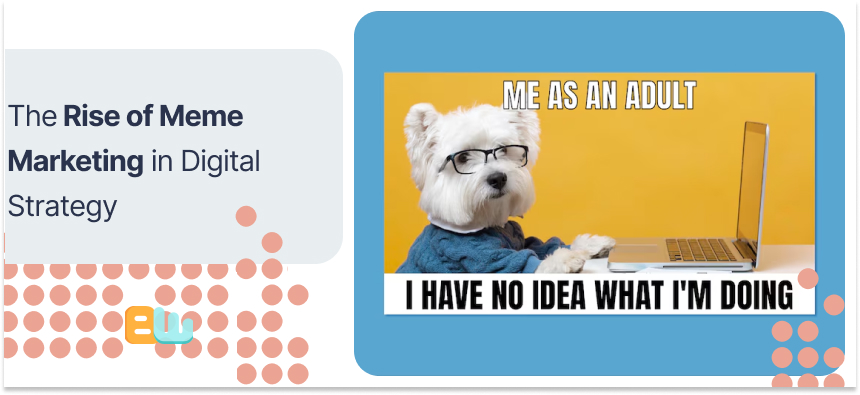
Remember when brands maintained a strictly professional voice on social media? Those times have long since passed. The most effective digital marketers of today are aware that in feeds that are dominated by entertainment and interpersonal relationships, formal business communication does not draw attention.
Why Memes Have Become a Marketing Powerhouse
Memes provide cultural currency, something that regular advertising cannot. In addition to spreading your marketing message, your audience is also endorsing it with their own social understanding when they share your meme. Paid advertising just cannot compete with the multiplier effect that this peer-to-peer sharing creates.
“Memes make brands relevant in everyday conversations, which is something that million-dollar campaigns frequently fail to do,” says Samantha Rodriguez, Director of digital strategy at Ogilvy. “They transform your audience from passive consumers into active participants in your marketing.”
This change is supported by the data: recent Social Media Examiner research shows that content in meme formats has 60% higher interaction rates than regular branded postings. This visual language has become crucial for marketers aiming to reach Gen Z and Millennials, who consume 20–30 memes on average every day.
Understanding the Psychology Behind Shareable Content
What makes us hit that share button? Psychological research points to several key triggers that successful memes leverage:
Identity signaling: When we share content, we’re telling our network something about ourselves. Memes that align with how people see themselves—or how they want to be seen—have higher share rates.
Emotional arousal: Compared to neutral content, content that increases high-arousal emotions—such as laughter, surprise, astonishment, or even controlled outrage—is shared more frequently.
Social currency is information that people share to appear knowledgeable, brilliant, or up-to-date.
Knowing these triggers helps marketers create content that meets the social demands of the audience as well as the brand’s message. The most effective meme marketing seems more like engaging with culture than it does like marketing.
How Meme Culture Shifted Brand Communication Strategies
Before 2015, most brand communication playbooks emphasized consistent messaging and carefully controlled brand voices. Today, those playbooks have been largely rewritten.
“The half-life of marketing messages has shortened dramatically,” notes digital strategist Mark Peterson. “When cultural references change weekly or even daily, brands can’t afford to spend months developing campaigns. Meme marketing allows for agile, responsive communication that stays culturally relevant.”
This shift has forced marketing teams to develop new capabilities:
– Real-time content creation
– Cultural trend monitoring
– Comfort with calculated risk
– Cross-departmental approval processes that can move at internet speed
Brands that have embraced this shift have seen their engagement metrics soar, while those clinging to traditional approval processes often find their “timely” content arriving too late to join the conversation.
5 Successful Brands That Mastered Meme Marketing
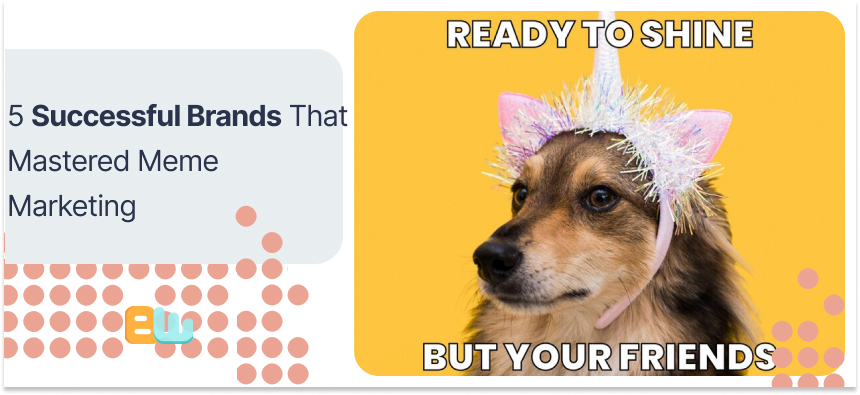
What does successful meme marketing look like in practice? These five brands demonstrate different approaches that have yielded exceptional results.
Wendy’s Twitter Revolution: Roasts That Went Viral
When Wendy’s decided to develop a sassy social media personality, they fundamentally changed how brands approach Twitter. Their strategy of “roasting” competitors and even customers (who ask for it) transformed their account from a standard corporate channel into entertainment that people actively seek out.
Their famous 2017 “Fresh, Never Frozen” exchange with a Twitter user questioning their beef quality racked up over 50,000 retweets and sparked a new era of brand personality on social media.
What makes Wendy’s approach work is consistency. Their voice remains recognizable whether they’re promoting new menu items or creating memes about competitor McDonald’s ice cream machines being perpetually broken.
Key takeaway: Commit fully to your meme marketing voice. Half-measures often fall flat where bold consistency builds recognition.
Netflix’s Strategic Use of Show-Based Memes
Netflix demonstrates how meme marketing can serve multiple business objectives simultaneously. Their social team consistently creates and shares memes using screenshots from their original content, accomplishing several goals:
1. Promoting shows to new viewers
2. Deepening engagement with existing fans
3. Extending the cultural relevance of their content between seasons
4. Creating shareable moments that function as word-of-mouth marketing
Their method is demonstrated by the way they handled the “Bird Box Challenge” memes: when users started making memes and challenges inspired by the Sandra Bullock thriller, Netflix joined in while at the same time highlighting safety points.
The main lesson is to use meme contents to create a sense of community among your audience and extend the lifecycle of your main products.
Gucci’s Surprising Pivot to Meme Campaigns
Because luxury brands usually avoid online comedy, Gucci’s #TFWGucci (That Feeling When Gucci) campaign is the most impressive one. The luxury brand worked with meme makers and Instagram artists to create a number of memes that highlighted their products.
Gucci became instantly relevant to younger audiences without sacrificing their premium positioning thanks to the campaign, which changed the biased idea about how luxury brands should communicate.
According to fashion marketing consultant Elena Barolo, “luxury brands have traditionally feared that humor would cheapen their image.” “Gucci proved that when executed with confidence, even the most exclusive brands can speak the language of internet culture without losing their allure.”
Key takeaway: Don’t assume your industry category excludes you from meme marketing—sometimes breaking category norms creates the most attention.
How Denny’s Built a Quirky Brand Identity
Denny’s transformation from basic diner company to “weird Twitter” pioneer displays how meme marketing can dramatically revive brand perception.
Posts in their stream-of-consciousness style usually don’t directly relate to their menu items; instead, they concentrate on developing an goofy brand identity that appeals to younger consumers.
“zoom in on the syrup” became one of their most engaged tweets ever, using the then-popular format of hidden messages in images to create a treasure hunt that ended with “has this distracted you from overwhelming existential dread lol.”
The seemingly nonsensical approach has made Denny’s one of the most followed restaurant chains online and dramatically shifted their customer demographics.
Key takeaway: Sometimes the most effective meme marketing barely mentions your product at all—it builds affinity through shared sensibility.
Spotify’s Data-Driven Meme Marketing Approach
Spotify shows how brands can create meme-worthy moments from their own data. Their annual “Wrapped” campaign transforms user listening data into highly shareable, personalized content that users voluntarily post across their social networks.
Beyond Wrapped, Spotify regularly creates memes using listening trends and user behaviors. “Dear person who played ‘Sorry’ 42 times on Valentine’s Day, what did you do?” is one of their strangely detailed playlist names on their billboards that went viral on social media and sparked a plethora of user-generated versions.
Finding distinctive data points within your company that may be used as templates for relatable, shareable content is the main lesson.
Creating an Effective Meme Marketing Strategy
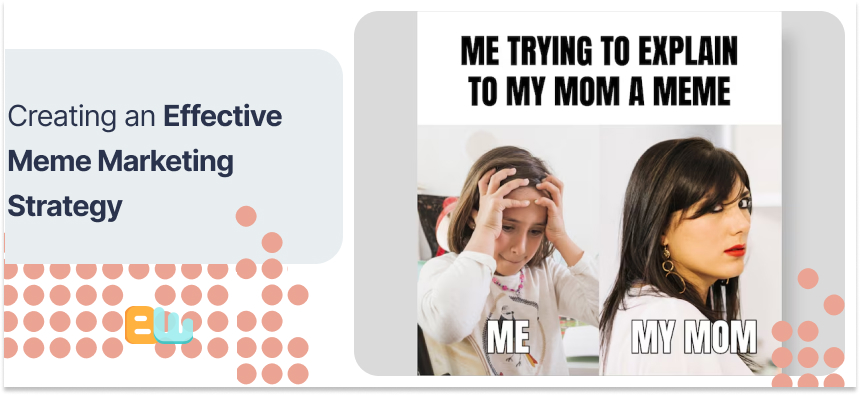
There is more to successfully integrating memes into your marketing than just following popular formats. A strategic approach ensures your meme content supports broader business objectives.
Identifying Your Brand’s Meme-Worthy Voice
Not every brand should adopt the same meme approach. Finding your authentic meme voice means considering:
Your existing brand personality: Evolution works better than revolution. It will cause controversy to post edgy comedy all of a sudden if your business is recognized for being educational and helpful.
Your audience’s expectations: What type of content already resonates with your followers? What meme styles appear in their feeds?
Your comfort with risk: More provocative meme styles can drive higher engagement but also carry greater potential for backlash.
“The most successful meme marketing feels like it comes from a person, not a committee,” notes social media strategist Jamie Wong. “Even large brands need to identify specific team members who understand both the brand voice and meme culture to lead these efforts.”
Consider creating a simple voice guide specifically for meme content that establishes boundaries while giving your team creative freedom within those parameters.
Timing Is Everything: Capitalizing on Trending Moments
The meme lifecycle moves quickly. A format that drives massive engagement today might feel stale by next week. Successful meme marketers balance two approaches:
Reactive meme marketing: Participating in trending formats and conversations as they emerge. This requires monitoring tools and streamlined approval processes.
Proactive meme creation: Developing original formats or putting unique spins on established meme structures that align with your brand message.
“Most brands focus exclusively on joining existing meme trends,” explains content strategist Marcus Bell. “But the biggest wins often come from creating your own meme-worthy moments that others want to participate in.”
Develop systems for both approaches, recognizing that reactive memes keep you relevant while proactive memes help you stand out.
Balancing Humor and Brand Message Effectively
The eternal challenge of meme marketing is maintaining the delicate balance between entertainment and marketing. Too much focus on your message kills the humor; too much focus on humor can leave your brand presence forgettable.
Consider the 70/30 rule: 70% of your meme’s impact should come from its entertainment value, while 30% supports your brand message or recognition.
Effective techniques include:
– Using your product in unexpected meme contexts
– Creating formats that naturally incorporate your brand colors or visual elements
– Developing memes around customer pain points that your product solves
– Gently poking fun at your own industry or category conventions
The goal is content that would still be shared even if your logo weren’t attached—but that becomes more meaningful because your brand is part of the joke.
3 Ways to Test Memes Before Publishing
Even experienced meme marketers can misjudge how content will be received. These testing methods reduce that risk:
1. Internal focus groups: Create a channel where team members from different departments can react to potential meme content before it goes public. Look for consistent confusion or negative reactions.
2. Soft launches: Test meme concepts on your smallest social channel or in limited regional accounts before rolling them out broadly.
3. Community testing: Some brands have created private “insider” groups where loyal customers get early access to content and provide feedback.
“What’s funny to your marketing team might not resonate with your actual audience,” cautions community manager Priya Sharma. “Testing with a small, representative sample can save you from a very public misfire.”
The ROI of Meme Marketing: Measuring Success
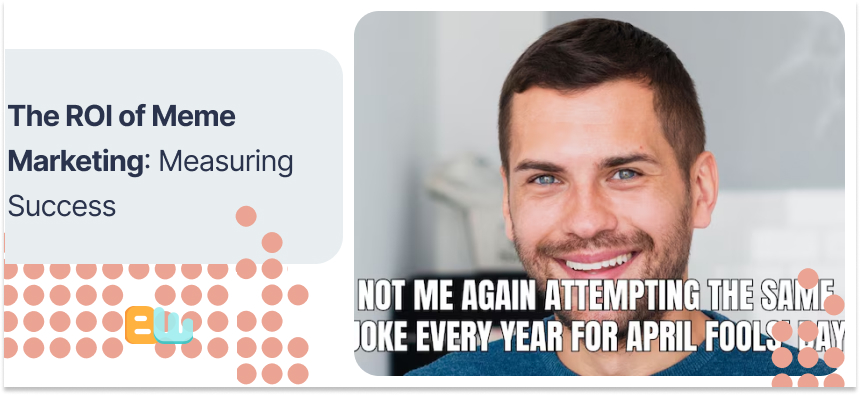
As with any marketing strategy, meme marketing must ultimately demonstrate business impact. While the casual nature of memes might suggest casual measurement, sophisticated marketers are developing rigorous approaches to quantifying results.
Engagement Metrics That Matter for Viral Content
Not all engagement metrics carry equal weight for meme content. Focus on:
Shares and saves: These represent the strongest endorsement of your content and directly expand its reach.
Comments: Particularly those that tag others or add to the joke, indicating strong resonance.
Sentiment: Using AI tools to analyze the emotional tone of responses.
Brand mention increases: Measuring whether your meme content drives broader conversations about your brand across platforms.
“Many brands focus too much on like counts, which are the lowest-effort engagement metric,” explains analytics specialist David Chen. “Shares and saves are much stronger indicators that your content is cutting through the noise.”
Consider creating a weighted engagement score that prioritizes these higher-value interactions to more accurately compare different meme approaches.
Converting Meme Shares into Customer Acquisition
While engagement is valuable, the ultimate goal is moving audiences closer to conversion. Effective strategies include:
Sequential targeting: Retargeting users who engaged with your meme content with more product-focused messaging.
Community building: Using meme engagement to identify potential brand advocates and inviting them to more immersive experiences.
Limited-time offers: Creating special promotions that reference popular meme content your brand has shared.
“Meme marketing works best as a top-of-funnel strategy,” notes conversion specialist Olivia Grant. “It creates recognition and positive association that makes subsequent conversion messages more effective.”
Track how exposure to your meme content affects conversion rates in later campaigns to quantify this halo effect.
Case Study: How Meme Campaigns Outperform Traditional Ads
Burger King’s “Moldy Whopper” campaign provides a powerful example of meme marketing ROI. Their time-lapse showing their preservative-free burger decomposing generated millions in earned media and sparked countless meme variations.
The campaign cost significantly less than traditional TV advertising but generated 8.4 billion media impressions and a 14% sales increase in markets where it ran.
“What made this campaign successful wasn’t just shock value,” explains marketing professor Jennifer Liu. “It was that it gave people a surprising, conversation-worthy message about food quality that contradicted fast food conventions.”
Potential Pitfalls and How to Avoid Them
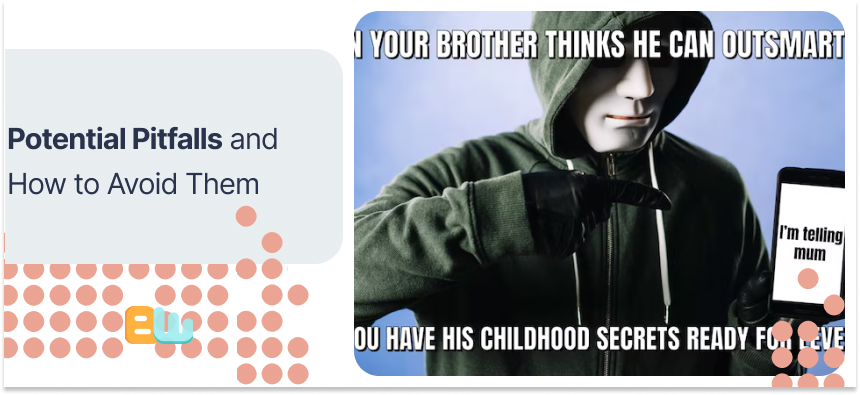
Brands must carefully manage the risks associated with meme marketing to prevent harming their reputation.
When Meme Marketing Backfires: Cautionary Tales
Several high-profile meme marketing failures offer valuable lessons:
DiGiorno’s #WhyIStayed hashtag misuse: The pizza brand tweeted “#WhyIStayed You had pizza” without realizing the hashtag was being used for domestic violence discussions, creating immediate backlash.
Lesson: Always research hashtag contexts before joining conversations.
SparkNotes’ problematic joke formats: The study guide company faced criticism for using meme formats that trivialized serious themes in literature they were meant to be helping students understand.
Lesson: Consider whether your meme approach undermines your core brand purpose.
Sunny Co Clothing’s overwhelmed promotion: Their “everyone who shares gets a free swimsuit” meme went so viral they couldn’t fulfill the promise, damaging trust.
Lesson: Ensure your fulfillment capabilities match your viral ambitions.
“The common thread in these failures is disconnection,” observes crisis management expert Carlos Rivera. “Either disconnection from the cultural context, from the brand’s own values, or from operational realities.”
Navigating Cultural Sensitivity in Humorous Content
Humor inherently involves pushing boundaries, but responsible meme marketing requires awareness of where those boundaries lie for different audience segments.
Best practices include:
– Diverse review teams who can spot potential issues before publication
– Focusing humor on shared experiences rather than group characteristics
– Avoiding formats that originated in potentially problematic contexts
– Being prepared to acknowledge missteps quickly when they occur
“The goal isn’t to never make mistakes,” explains inclusion consultant Rebecca Washington. “It’s to create systems that minimize the likelihood of harmful content and respond appropriately when issues arise.”
Legal Considerations for Using Meme Templates
The legal landscape around meme usage remains complex. Key considerations include:
Copyright implications: Using screenshots from copyrighted media could potentially trigger takedown notices, though many rights holders recognize the promotional value of meme usage.
Rights of publicity: Using images of recognizable people (even from meme templates) may require permission in some jurisdictions.
Platform-specific rules: Each social network has different policies regarding meme content, particularly around election periods or health topics.
“The informal nature of meme culture sometimes creates a false sense that normal intellectual property considerations don’t apply,” warns entertainment lawyer Michael Goldstein. “While enforcement is inconsistent, brands should still perform basic rights clearance or use properly licensed templates.”
Several stock image services now offer meme-specific licensing options that provide safer alternatives for brand use.
Future Trends in Meme Marketing for 2023
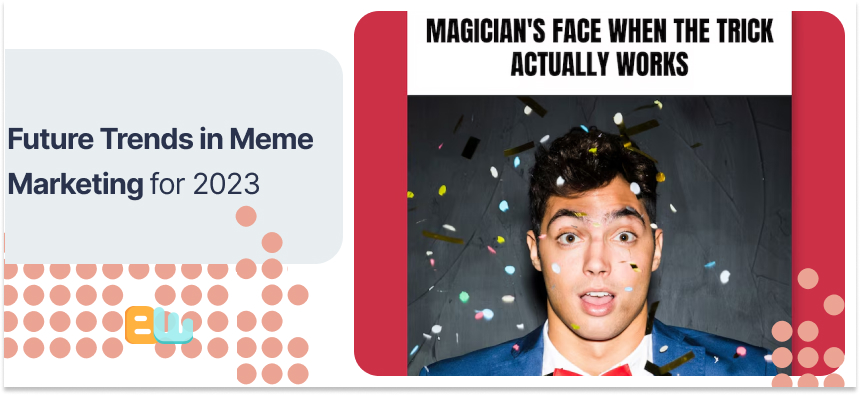
As meme marketing matures as a strategy, several emerging trends are shaping its evolution.
How AI Is Changing Meme Creation and Distribution
AI tools are transforming meme marketing in several key ways:
Creation support: Brands can create unique meme templates that are suited to their unique messaging requirements with the help of tools like DALL-E and Midjourney.
Scalable personalization: AI lets companies make customized meme versions according to user information or their priorities.
Predictive analytics: To determine which meme formats are most likely to gain traction, new technologies can examine early engagement patterns.
Rahul Patel, a technology expert, observes that “the brands seeing the most success with AI aren’t replacing human creativity.” “They’re using AI to improve their creative teams’ capabilities and act more quickly on emerging trends.”
The Rise of Platform-Specific Meme Strategies
One-size-fits-all meme strategies are losing their effectiveness since social media platforms vary in terms of functionality and audience expectations.
Instagram is increasingly favoring carousel layouts that tell mini-stories, whereas TikTok memes mainly rely on auditory cues and interactive challenges.
Once thought to be a place free of memes, LinkedIn now sees a lot of industry-specific comedy that respects professional boundaries.
According to social strategist Vanessa Liu, “the most advanced meme marketers are creating platform-native strategies instead of just cross-posting the same content.” “They recognize that what works on Twitter often doesn’t work on TikTok, and vice versa.”
Why Video Memes Are Dominating Engagement Metrics
Static image memes aren’t disappearing, but video formats are showing significantly higher engagement rates across platforms:
– Short-form meme videos (under 15 seconds) generate 2.5x the engagement of image memes
– Looping formats like GIFs continue to outperform static images in email marketing
– Caption-based video formats allow for more complex humor and storytelling
“Motion creates stopping power in increasingly crowded feeds,” notes creative director Jason Park. “Even simple animation of traditional meme formats can dramatically improve performance.”
For brands with limited video production capabilities, tools like Canva and Kapwing have simplified the creation of basic animated meme content.
Implementing Meme Marketing for Your Business
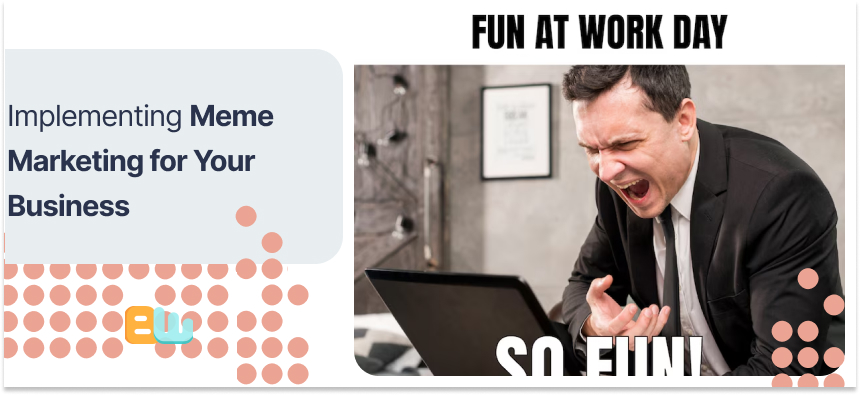
Ready to incorporate meme marketing into your strategy? Here’s how to begin regardless of your team size or resources.
Starting Small: Low-Risk Meme Marketing Tactics
You don’t need to immediately develop viral content to benefit from meme approaches:
Start with your owned channels: Experiment with meme formats in email newsletters or customer communities before moving to public social platforms.
Focus on industry-specific formats: Memes related to your specific business category often have lower reach but higher relevance for your core audience.
Adapt rather than create: Begin by putting your brand spin on established templates before developing original formats.
“Many brands make the mistake of trying to create the next big meme right away,” warns social media consultant Tracy Robinson. “It’s much more effective to build your meme marketing muscles gradually in lower-stakes environments.”
Building a Responsive Team for Real-Time Opportunities
Effective meme marketing requires rethinking traditional approval processes:
Define accurate rules for what topics, language, and images are permitted without further review by establishing pre-approved content limits.
Form a team for quick responses: Determine which team members are capable of making prompt decisions regarding content that has a tight deadline.
Develop response templates: Prepare frameworks for addressing both positive viral moments and potential missteps.
“The brands that consistently succeed at meme marketing have restructured their approval processes,” notes organizational consultant Daniel Freeman. “They prioritize speed and cultural relevance while still maintaining appropriate brand guardrails.”
Tools and Resources for Effective Meme Creation
Developing successful meme content doesn’t require advanced design abilities:
Platforms for meme generators: Websites such as Imgflip and Kapwing provide easy-to-use templates for making memes that appear professional.
Tools for social listening: BuzzSumo and Hootsuite can be used to spot new meme trends before they become popular.
Creative asset libraries: Building a collection of brand-approved images, logos, and visual elements speeds up creation when trends emerge.
“The technical barriers to meme creation have essentially disappeared,” explains digital trainer Michelle Santos. “The bigger challenge is increasing the cultural intelligence to know which formats resonate with your brand and when to use them.”
When social media managers are paired with designers who can quickly implement ideas as trends appear, many businesses find success.
Conclusion: Finding Your Brand’s Meme Voice
One of the most significant changes in the way brands interact with consumers in the internet era is meme marketing. When done well, it turns conventional one-way advertising into cultural dialogues that people want to actively engage in and spread.
The most effective meme marketers know that this technique isn’t about giving up on brand strategy; rather, it’s about communicating that goal in formats that are culturally appropriate and speak to the way that the new generation can also communicate.
As you create your own meme marketing strategy, concentrate on identifying the genuine point where online culture and the distinct personality of your company meet each other. Creating a unique meme voice that your audience can identify with and interact with is more important than only copying what other businesses are doing.
Start small, take careful steps, and keep in mind that the most effective meme marketing feels more like a brand boldly engaging in the cultural discussions that your target audience already finds important.
